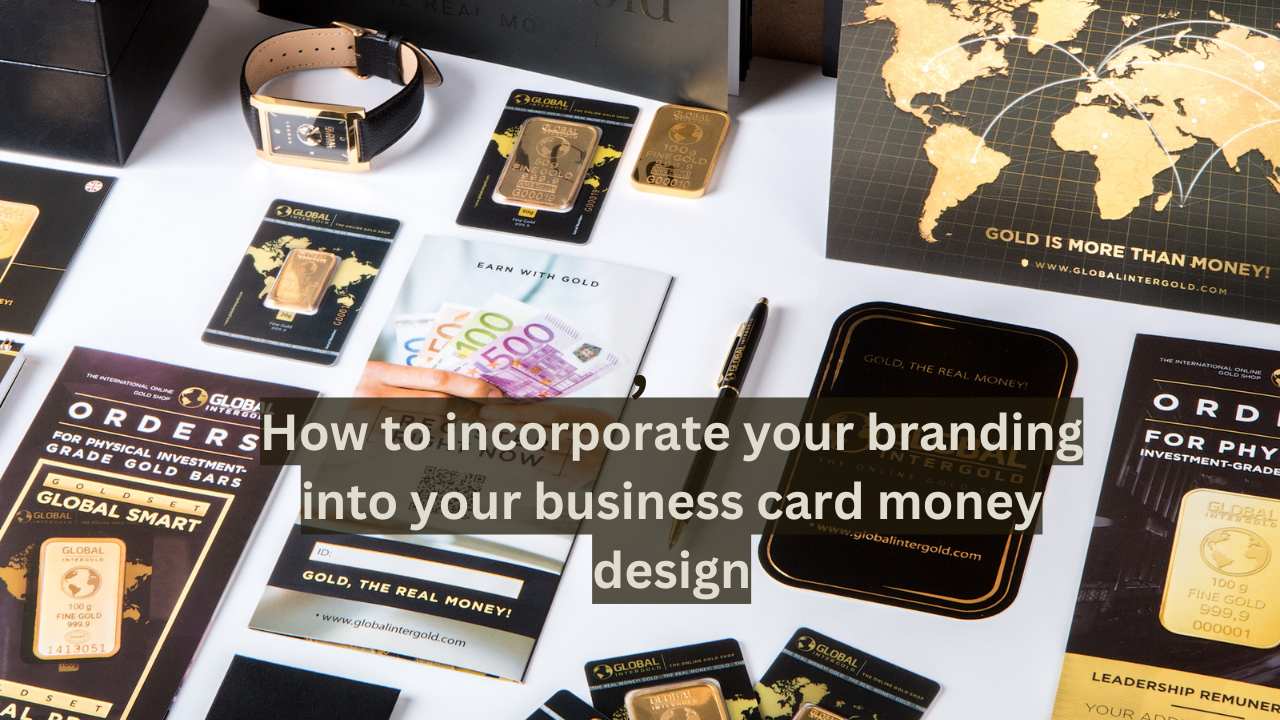Your business card is often the first impression people get of your brand, so it’s crucial to make it memorable and reflective of your business identity. Whether you’re a freelancer, entrepreneur, or part of a larger company, a well-designed business card can convey professionalism and trustworthiness. Here’s a step-by-step guide on how to incorporate your branding into your business card design effectively.
1. Understand Your Brand Identity
Before designing your business card, you need to have a clear understanding of your brand’s identity. This includes your:
- Logo: The visual symbol of your brand.
- Brand colors: The color palette that represents your brand.
- Typography: Fonts that align with your brand’s tone and personality.
- Tone and message: The voice and message you want to convey to your audience.
These elements work together to create a cohesive image that your business card should reflect.
2. Start with a Strong Logo
Your logo is the cornerstone of your brand identity, so it should feature prominently on your business card. Here’s how to make it stand out:
- Placement: Traditionally, logos are placed in the upper left corner or the center of the card. Choose a spot where it grabs attention but doesn’t overwhelm other important details.
- Size: Make sure the logo is large enough to be easily recognizable but doesn’t overshadow the text. It should complement the card’s overall design.
- Resolution: Ensure your logo is high-resolution to avoid any pixelation when printed. A sharp, clear logo conveys professionalism and attention to detail.
3. Use Your Brand Colors
Incorporating your brand’s color scheme helps create consistency across all your business materials. Here’s how to use your colors effectively:
- Primary colors: Use your brand’s primary color as the dominant color on your business card. This can be used in the background, logo, or borders.
- Accent colors: Incorporate accent colors to highlight specific elements, such as your name or job title. Using complementary colors can make these details pop without clashing.
- Contrast: Make sure there’s enough contrast between your background and text so that the card is easy to read. For example, dark text on a light background or vice versa.
Using your brand colors will make your card instantly recognizable and tie it to your other marketing materials, such as your website, brochures, or packaging.
4. Select the Right Typography
Your choice of typography should match your brand’s personality and be easy to read. Here’s how to pick the right fonts:
- Consistency: Use the same fonts that are part of your branding guidelines. This ensures consistency across all platforms and creates a cohesive look.
- Readability: Choose fonts that are clear and legible. Avoid overly decorative or complex fonts that can be hard to read at small sizes.
- Font pairing: If you use more than one font, make sure they complement each other. For instance, you might use a bold sans-serif font for your name and a softer serif font for your contact details.
Typography sets the tone for your brand—whether it’s professional, playful, modern, or traditional—so choose fonts that reflect your business style.
5. Include a Tagline or Slogan
If your brand has a tagline or slogan, consider adding it to your business card. It can quickly communicate what your business does or what sets you apart. Here’s how to do it right:
- Placement: Position the tagline underneath your logo or your name, where it’s easy to see but doesn’t clutter the design.
- Font and size: Use a smaller font size than your contact details but make sure it’s still legible. Italics or a different font weight can help distinguish it from the rest of the text.
- Keep it short: Taglines should be concise and memorable. Limit it to a few words that encapsulate your brand’s value proposition.
A well-placed tagline reinforces your brand’s message and makes your business card more impactful.
6. Choose the Right Card Shape and Finish
The design of your business card isn’t just about what’s on it—it’s also about the shape and texture. Different card shapes and finishes can further reflect your brand’s identity:
- Shape: While the standard rectangular business card is always a safe option, unique shapes can make your card stand out. Circular, square, or custom-cut shapes can be used to highlight your brand’s creativity.
- Paper stock: The thickness and feel of your card can say a lot about your brand. Premium paper or materials, such as linen or metallic finishes, can give your card a luxurious feel, while a matte finish can offer a sleek, modern look.
- Embossing and foiling: If you want to add a touch of elegance, consider embossing your logo or adding foil accents in your brand colors. These techniques create texture and make your card feel more premium.
Choosing the right shape and finish ensures that your business card not only looks good but also feels like a quality representation of your brand.
7. Align Your Contact Information with Your Brand
Your contact details are essential, but they should be presented in a way that complements your brand’s tone. Here’s how:
- Prioritize relevant information: Include the essentials like your name, phone number, email, and website. If your brand is active on social media, add your handles, but only include what’s relevant to your audience.
- Style your name and title: Your name should stand out and be one of the most prominent features of the card. Your title or role within the company can be smaller but should still be easy to read.
- Brand-specific email: Make sure the email you provide is branded, such as [email protected], rather than a generic address like Gmail or Yahoo.
Presenting your contact information in a clean and organized way helps reinforce professionalism and makes it easier for people to reach you.
8. Incorporate Your Brand’s Visual Elements
Beyond your logo, consider adding other visual elements that are part of your brand’s identity:
- Icons or symbols: Use icons that align with your industry or brand. For example, if you run a tech company, small, sleek tech-related icons can add a modern touch to the card.
- Patterns or graphics: Incorporating a subtle brand pattern or graphic on the background can enhance your card’s visual appeal without overwhelming the information. Just be sure it doesn’t detract from readability.
- Illustrations: If your brand has a playful or artistic vibe, small illustrations can bring personality to the design.
These additional elements add depth to your design and make your business card feel more branded and unique.
9. Maintain Simplicity and Balance
When designing a business card, it can be tempting to pack in a lot of information and visuals. However, it’s crucial to maintain simplicity and balance:
- White space: Leave enough white space to make the card look clean and uncluttered. This ensures that the important details stand out.
- Avoid overcrowding: Resist the urge to include too much information. Focus on the essentials, and let your branding speak for itself.
- Balance text and visuals: Ensure that the text and visuals (like your logo and any icons) are evenly distributed on the card. A well-balanced design makes your business card visually appealing and professional.
Simplicity creates a more polished and effective design.
10. Test and Print with High-Quality Materials
Before finalizing your design, test it by printing a sample:
- Proofread: Double-check all the details, including your contact information and any branding elements, for accuracy.
- Print a test version: Print a test card to ensure colors, fonts, and logos look as expected. Pay attention to how the colors appear in print compared to your digital design.
- Choose high-quality printing: To maintain a professional image, opt for high-quality printing services. Consider premium paper stock, and choose a finish (matte, glossy, or textured) that reflects your brand’s personality.
A well-printed business card leaves a lasting impression and enhances your brand’s credibility.
Conclusion
Incorporating your branding into your business card design is essential for creating a professional and memorable impression. By focusing on your brand’s core elements—logo, colors, typography, and tone—you can design a card that effectively communicates who you are and what you stand for. Remember to balance creativity with simplicity, choose quality materials, and keep your branding consistent across all platforms. With a thoughtfully designed business card, you’ll leave a lasting mark on everyone you meet.
FAQ
1. What should I avoid when designing a business card?
Avoid overcrowding the card with too much text or visuals. Stick to essential information, and ensure your card has enough white space for a clean design.
2. Can I design a business card without a logo?
While it’s possible, a logo is a key branding element that helps make your card memorable. If you don’t have one, consider getting a simple logo designed to enhance your branding.
3. Should I use both sides of the business card?
Using both sides is a great way to include additional branding elements, such as your slogan or social media handles, without overcrowding the front of the card.
4. What’s the best type of paper for a business card?
Opt for thicker, high-quality paper to give your card a premium feel. Popular choices include matte, glossy, or textured finishes, depending on your brand’s aesthetic.
5. Can I incorporate my personal brand if I work for a company?
Yes, if allowed by your company’s guidelines, you can incorporate personal branding elements like your personal website or social media handles, alongside your company’s branding.


